Port Ngqura, a clearly artificial, yet surprising sanctuary for marine life
As a young scientist looking for a PhD topic, I wanted it to be something that truly grasped my interest. It took a few people by surprise when I said I wanted to work in a harbour in Algoa Bay. An industrial, concrete seascape slap bang in a bussling coastal city. I guess it was quite a drastic change considering my previous work in some of the most beautiful Marine Protected Areas in the country. Port Ngqura had so many unanswered questions, an unexplained biodiversity and the most amazing congregations of sharks and rays in the summer. It couldn’t be a happy accident, I had to know why marine life had established so fruitfully within this massive port.
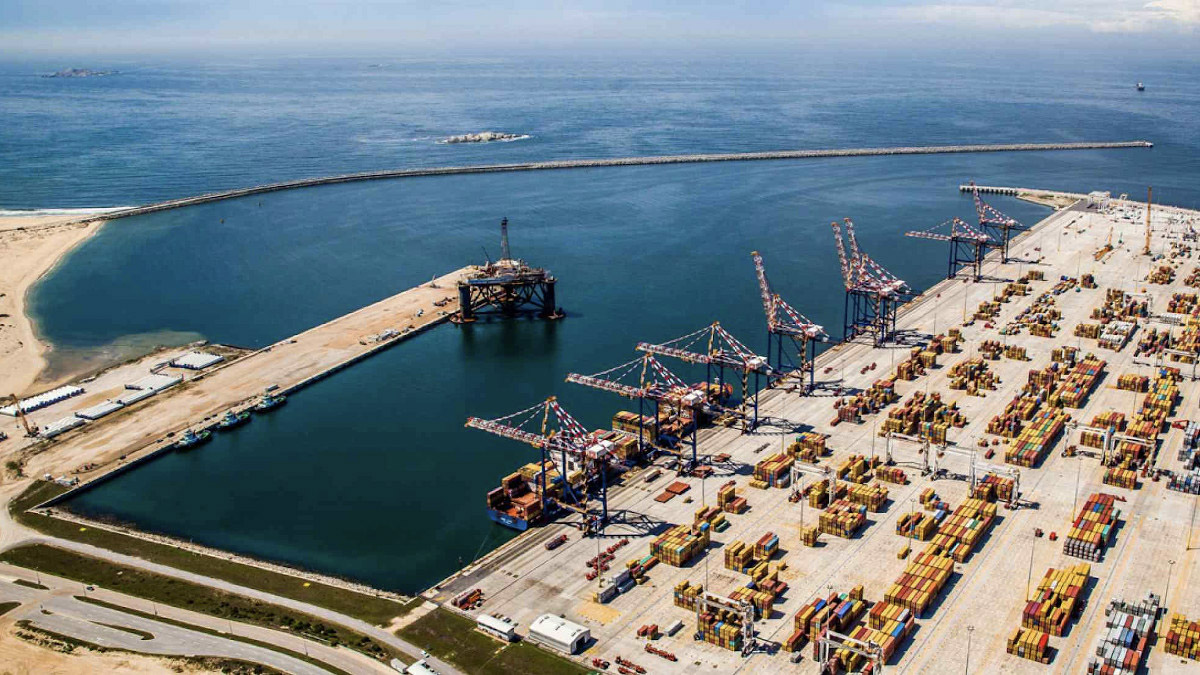
Port Ngqura is a thriving industrial zone, the container terminals provide several jobs for local communities and support global trade. Photo © Vivienne Dames
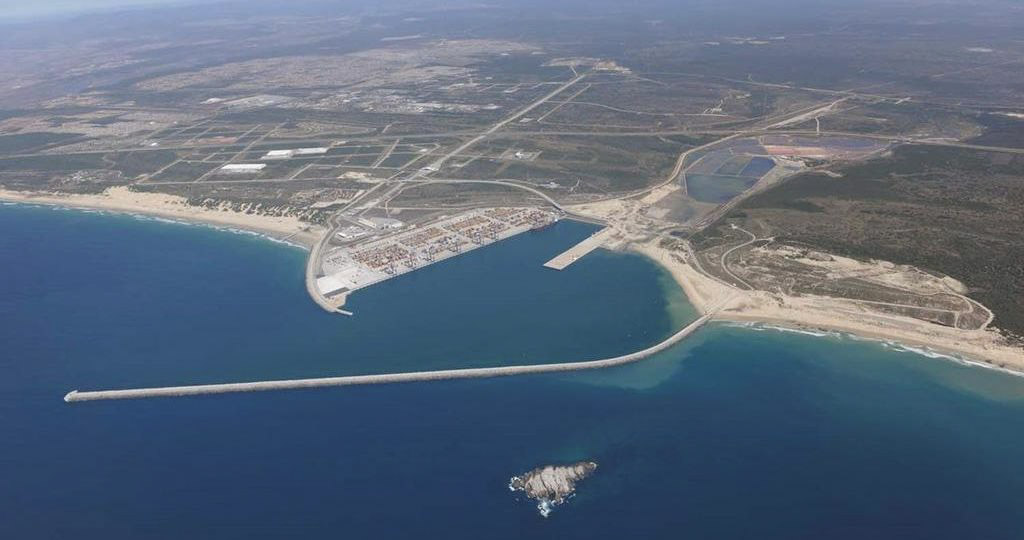
The extensive breakwalls of Port Ngqura provides shelter from adjacent rough surf zones, as well as keeping water slightly warmer than Algoa Bay. Photo © Vivienne Dames
A long-term tagging project had been established in Port Ngqura in 2006 to 2011 and again from 2011 to present. When I first received the data, I couldn’t believe my eyes. How did a small group of anglers, no more than 12, achieve 13 387 catches since 2011? Not to mention that those records are across 74 species, with 8 213 of those fish being tagged with spaghetti tags. The sharks and rays of Port Ngqura made up more than a third of all catches, and more than half of tagged fish. The species list showed sharks and rays from an impressive 29 species. Of these species 6 are listed as Critically Endangered and 6 as Endangered by IUCN classification.
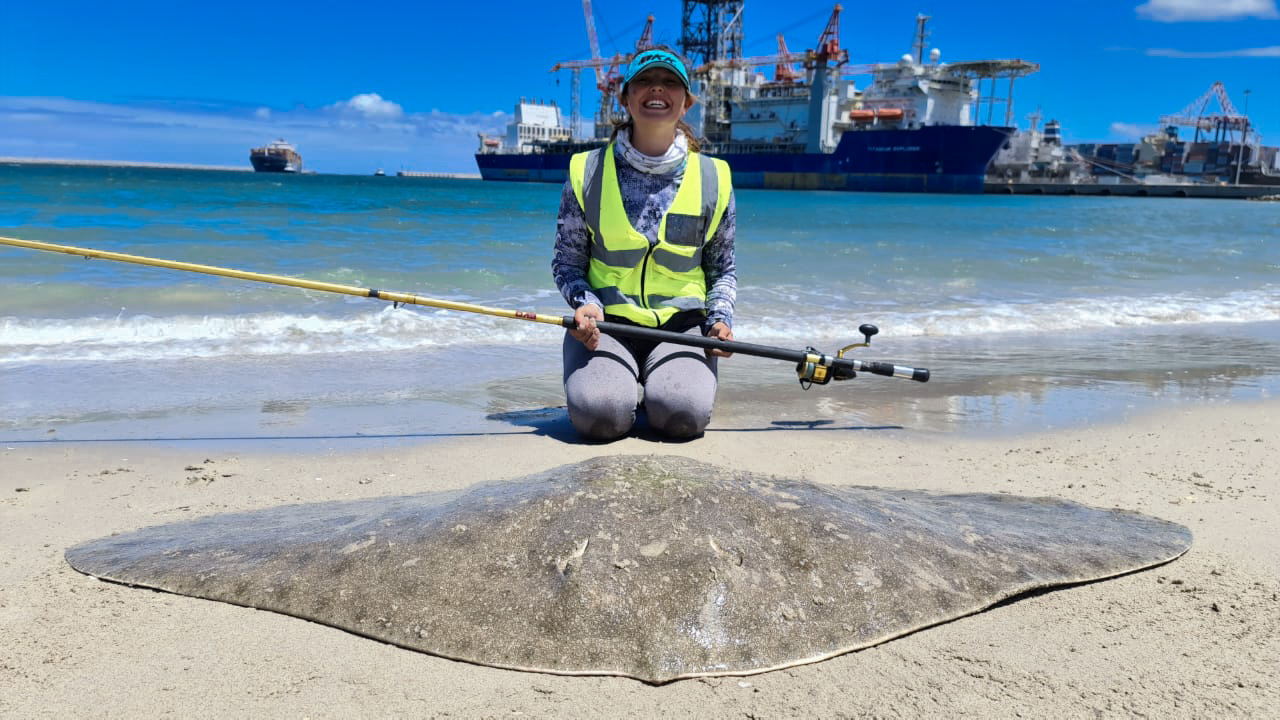
Large Backwater Butterfly rays occur in Port Ngqura during Summer. These animals are know for their impressive movements to Kwa-Zulu Natal and very little is known about them. Several recaptures from Port Ngqura have provided some of the first information on this species within the Eastern Cape. Photo © Francois Van Zyl
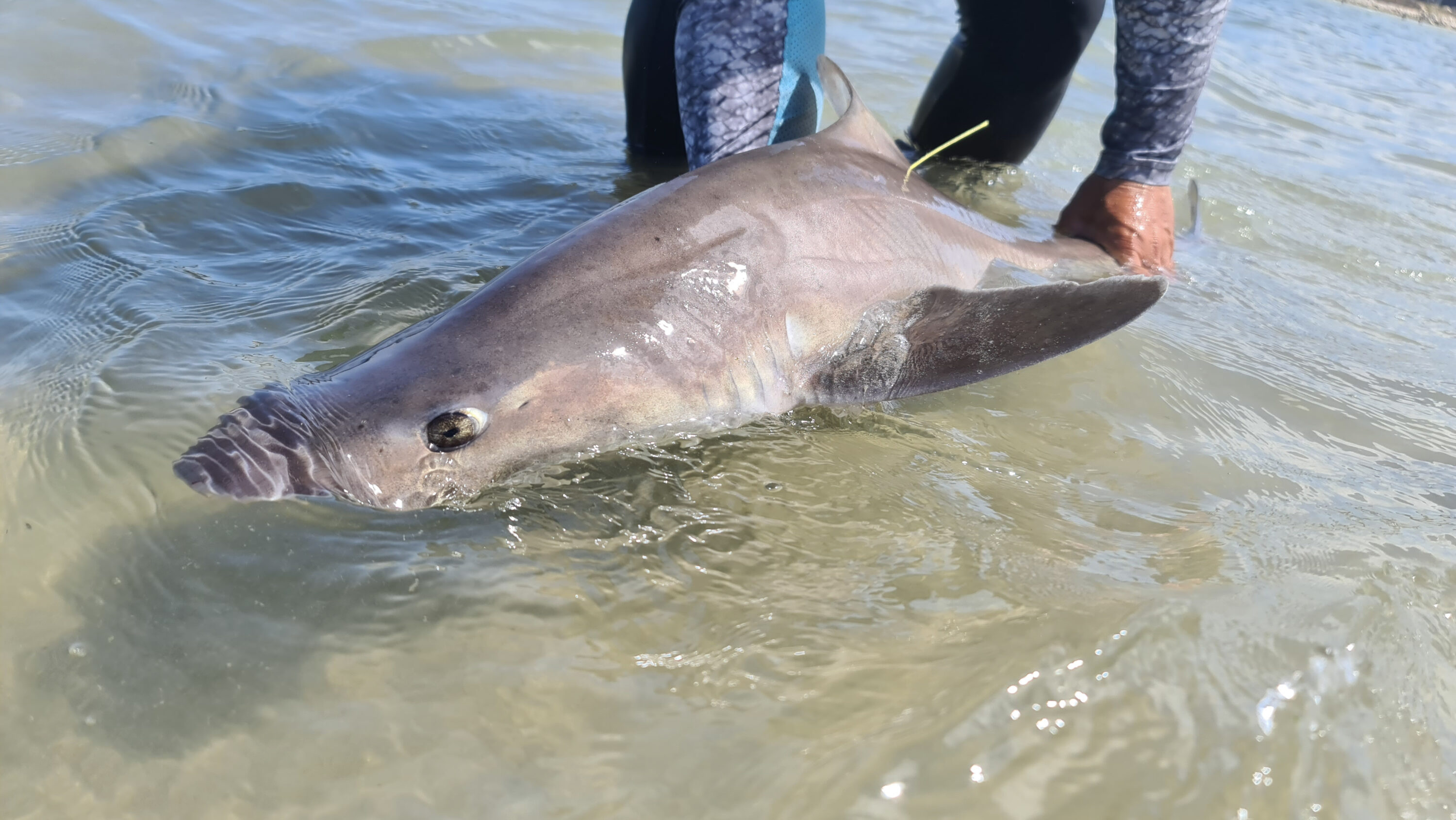
A young female smoothhound shark (Mustelus mustelus) with a dart tag being released in the Port Ngqura long term Biomonitoring programme in a effort to understand this species a little better. Photo © Vivienne Dames
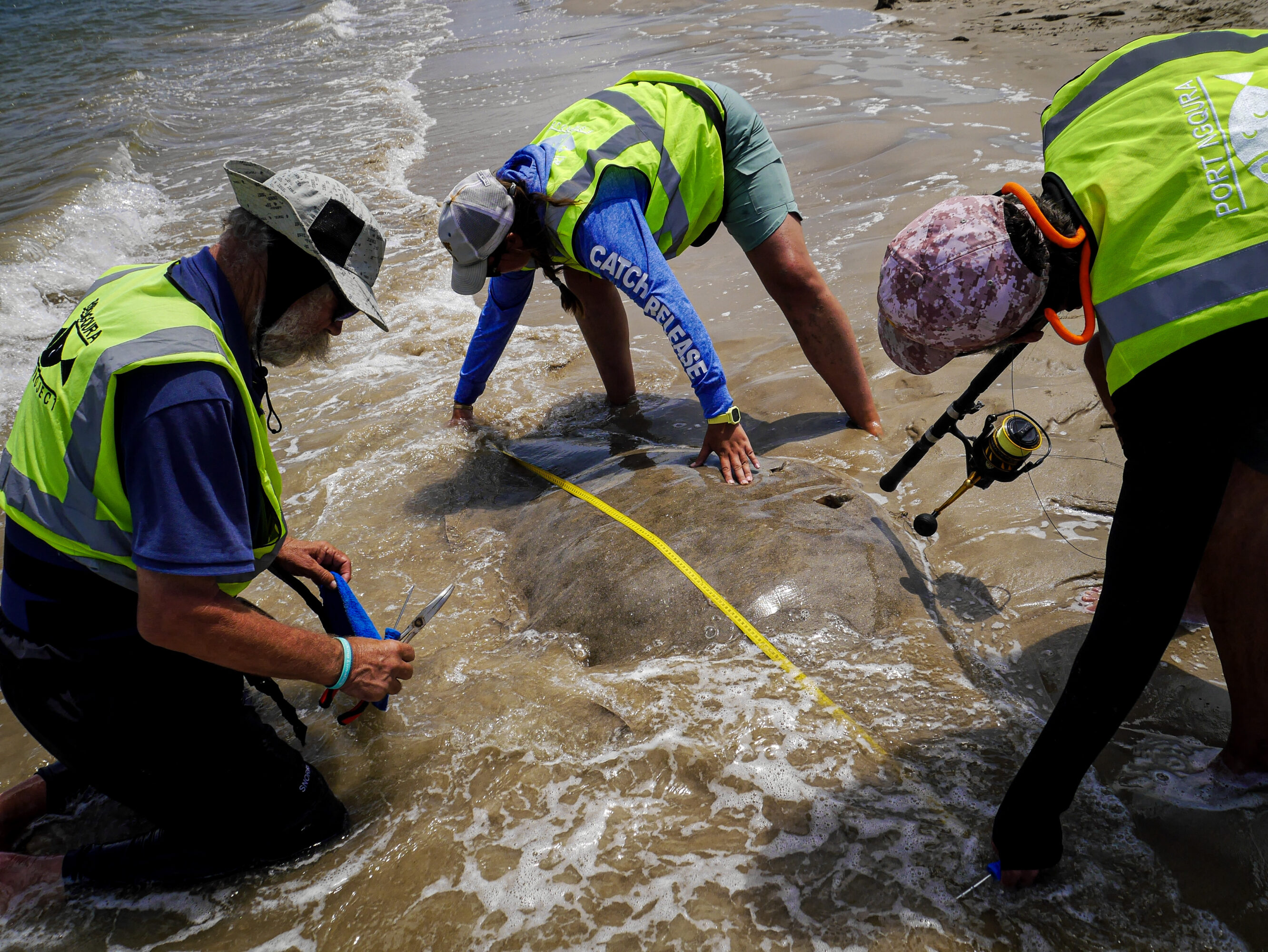
The tagging team in Port Ngqura recording essential length data from a large female Backwater Butterfly Ray (Gymnura natalensis) which was tagged with a dart tag and then released. Photo © Fanni Szakal
At this early stage in the research it was more than clear that this man-made seascape with extensive concrete break walls was in fact a critical habitat. If we look back at all the catch data and try read it like a story that’s where it gets very interesting.
Refuge
Every time Algoa bay experiences a harmful algal bloom (HAB), or a red tide as locals call it, there’s a significant increase in catches over that period. Even in the weeks leading up to that HAB event. It’s fair to assume that because Port Ngqura experiences far less seawater exchange, marine life is moving from Algoa Bay and into the Port to wait out this unfavourable event. This is particularly true for shark and ray species such as Raggedtooth sharks, Gulley sharks, Duckbill and Eagle Rays.
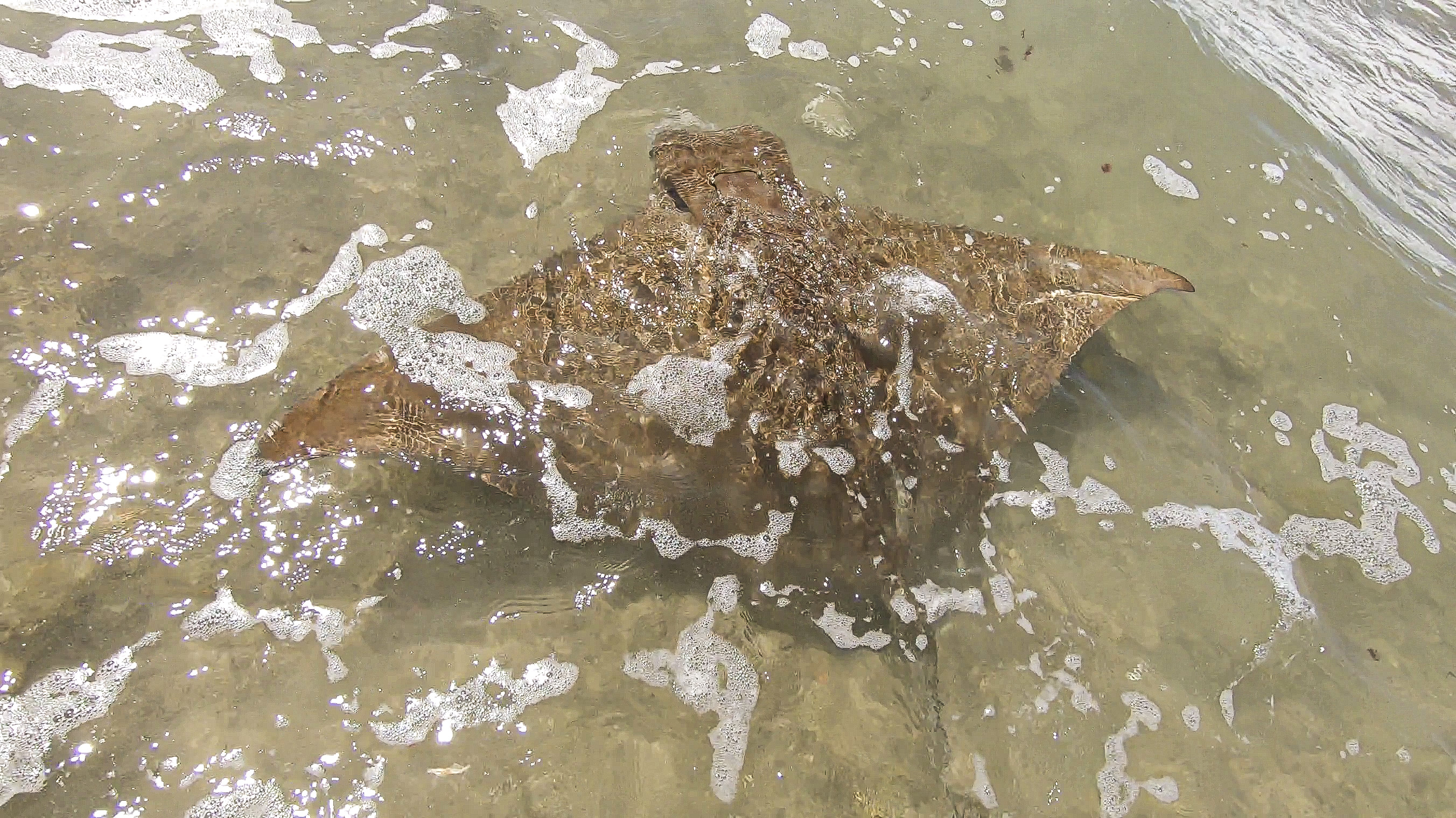
An adult duckbill ray (Aetomylaeus bovinus),swimming back strong into the waters of Port Ngqura after data was captured. Photo © Vivienne Dames
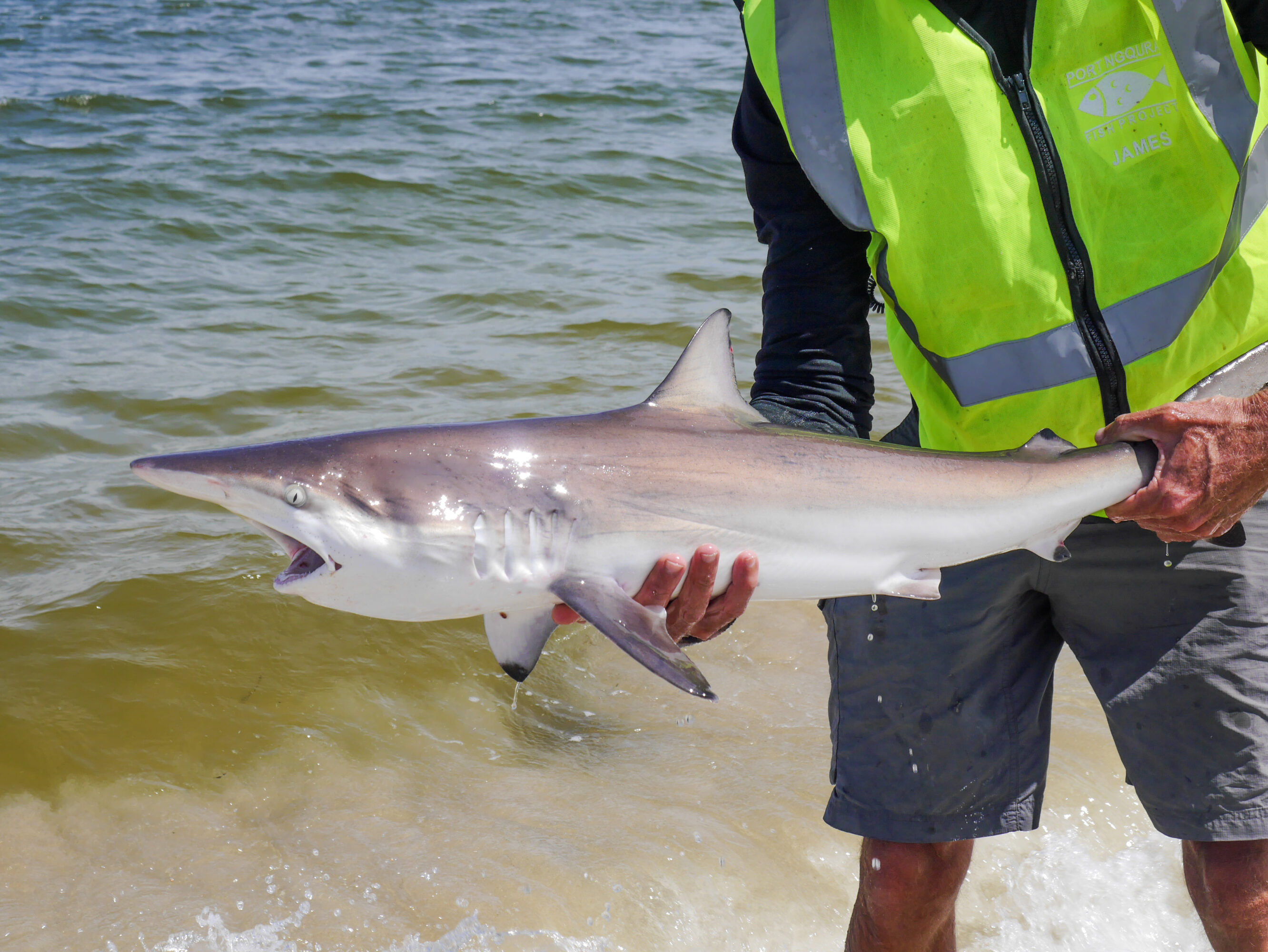
A juvenile dusky shark (Carcharhinus obscurus), being released to hopefully be recaptured later and provide this project with an essential data point. Photo © Fanni Szakal
Seasonal
Although there are sharks and rays, of various species within the Port all year round, the hordes really only arrive in Summer. As you stand on the sandy beach within Port Ngqura, you’re amazed by hundreds of smoothhound sharks (Mustellus mustellus) swimming in ankle deep water. Almost all of these smoothhounds are female, 97.2%, and there are several recaptures made within the Port suggesting that females return to this spot over the years. This is a compelling case for how their vacation in Port serves as an important role in their reproduction.
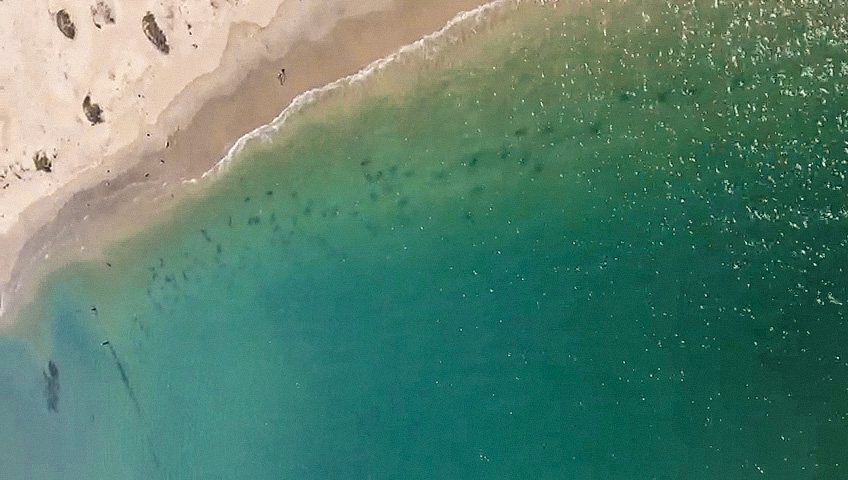
Aerial footage of the annual aggregations of smoothhound sharks (Mustelus mustelus) in Port Ngqura, every year during the summer months. Almost all (97.3%) of these sharks are females. Photo © Matt Dicken
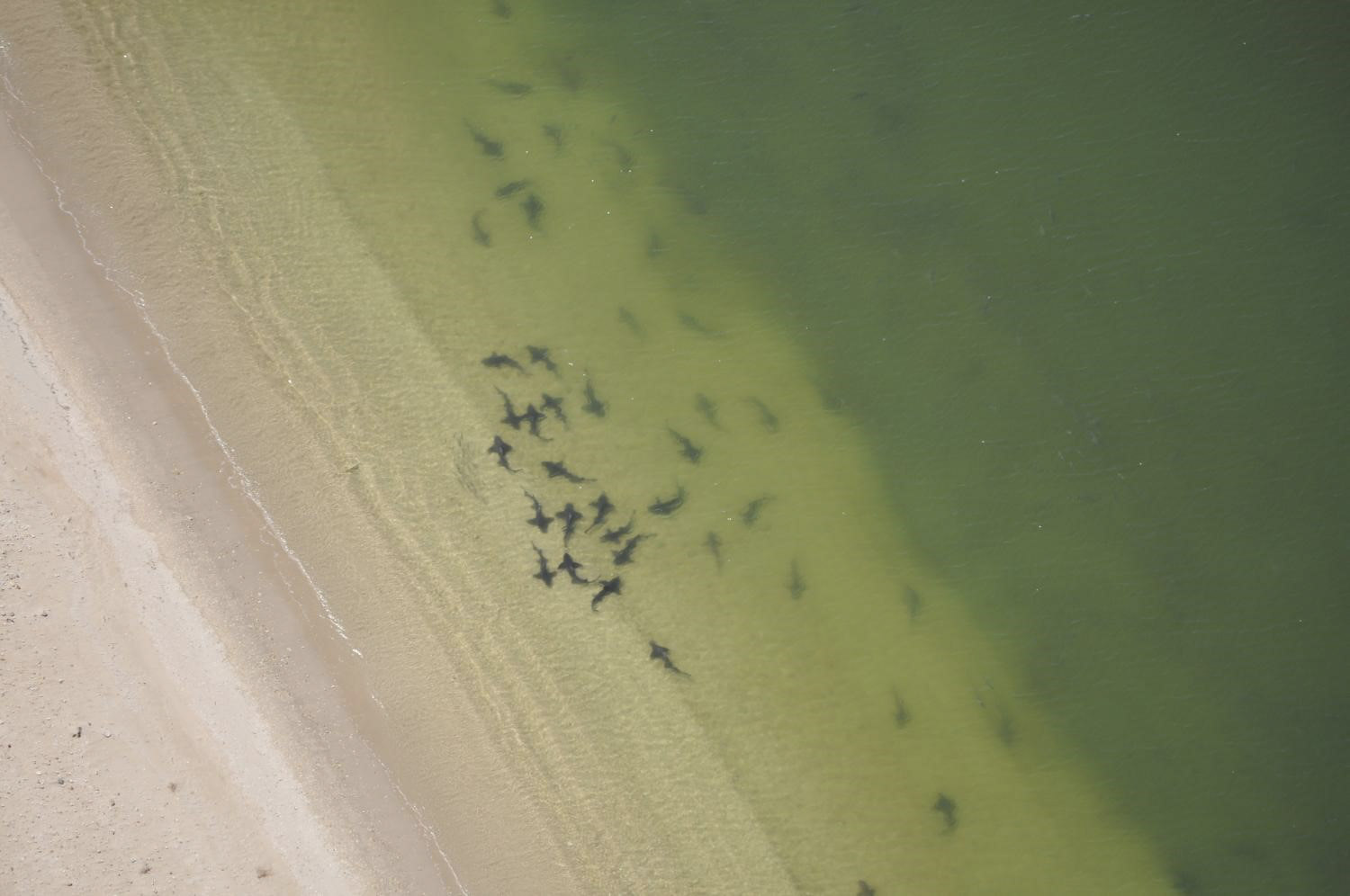
Aerial footage of Spotted Gulleysharks (Triakis megalopterus) gathering in the shallows of Port Ngqura during winter, most likely to bask in the sun and warmer shallows. Photo © Matt Dicken
Juvenile Dusky sharks, with their umbilical scars still visible, over summer in large groups potentially taking advantage of prevalent baitfish. Along the 2.7 km long Eastern Breakwall, Raggedtooth sharks swim and surface all around the boat. The only shark species that gulps air to regulate their buoyancy. Large Diamond and Duckbill Rays soar through the shallows, and in a brief window of summer, juvenile reef mantas are seen surface feeding in small groups. It truly is a weird and wonderful place, with so many questions to answer.
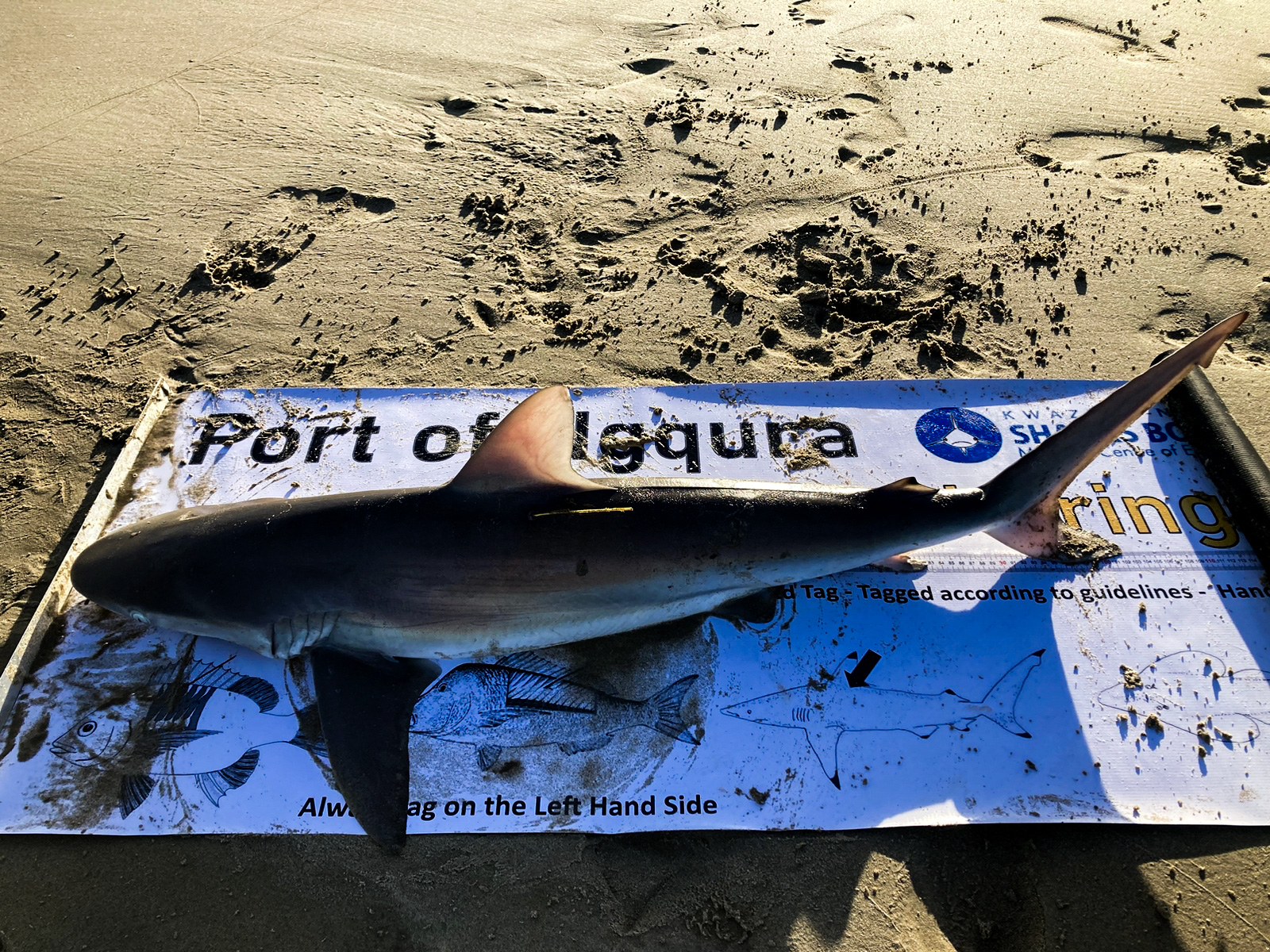
A recaptured dusky shark (Carcharhinus obscurus), which data showed it had been originally taged in Port Ngqura a little more than a year ago. This suggest that individuals return to Port Ngqura every year. Photo © Vivienne Dames
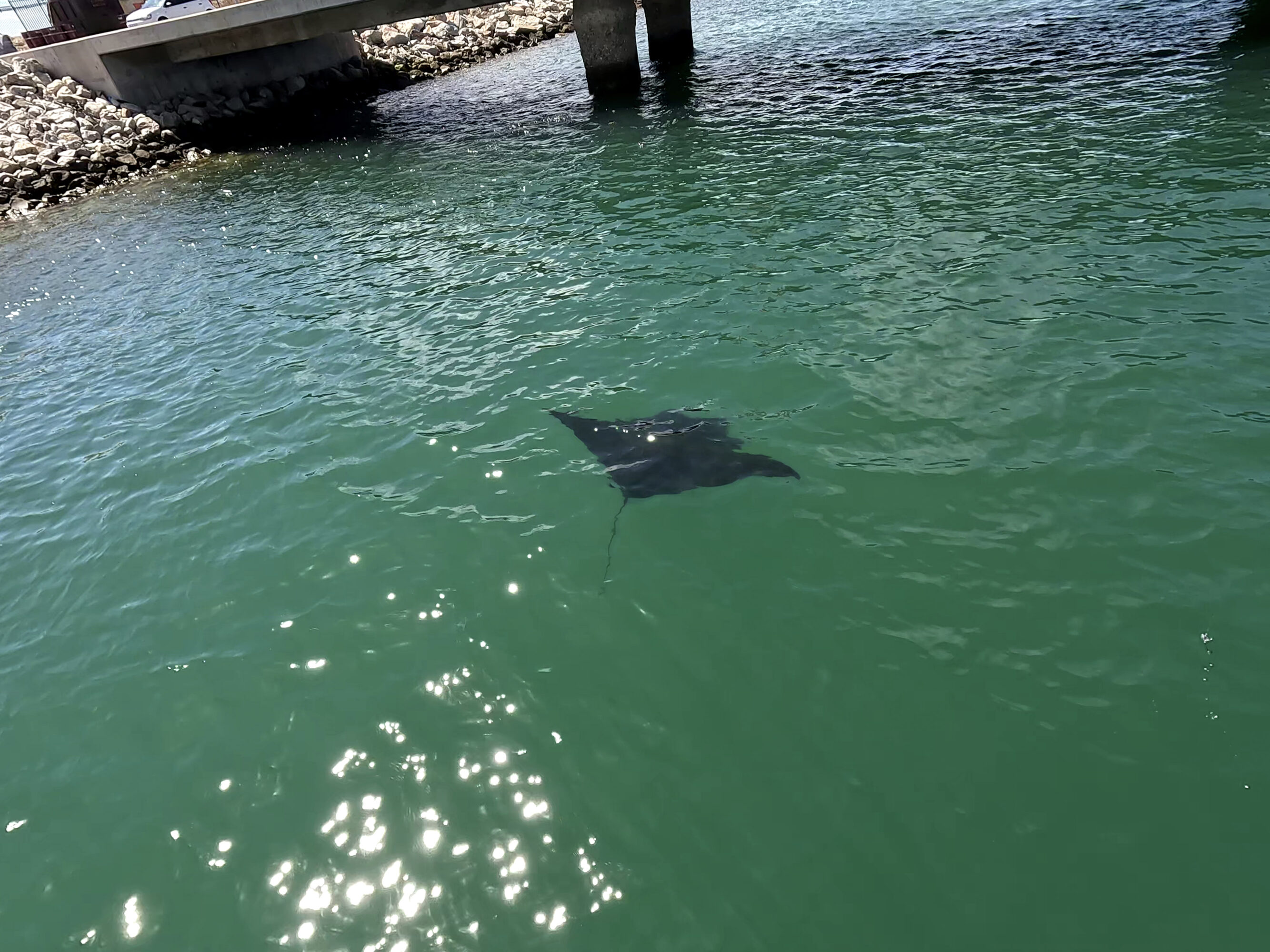
Juvenile manats are seen annually in small groups throughtout Port Ngqura, suggesting that this artifical habitat provides potential refuge or serves as a nursery feeding ground for priority species. Photo © Vivienne Dames
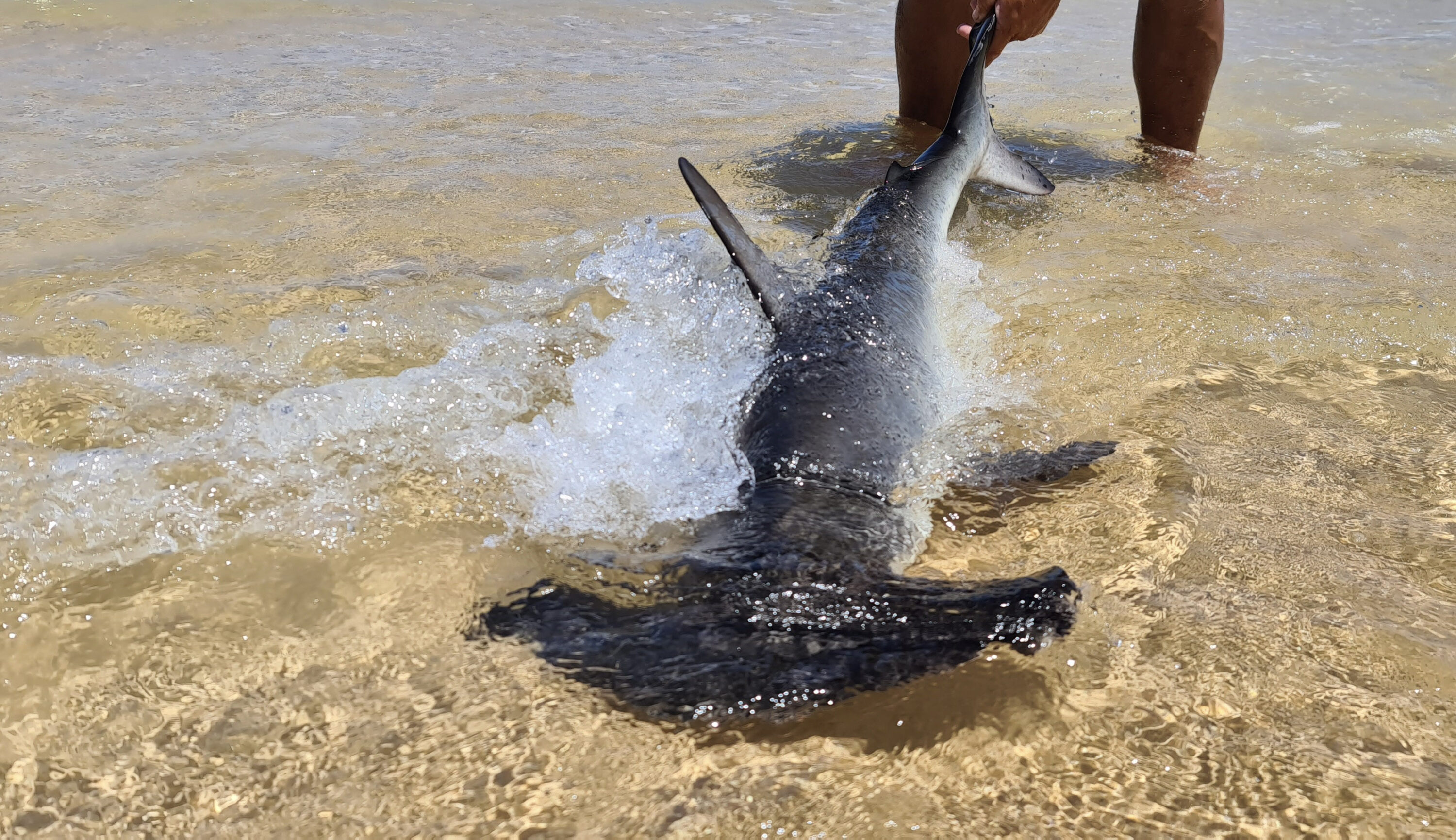
A beautiful scalloped hammerhead (Sphyrna lewini). Their juveniles are common in Summer months. Photo © Vivienne Dames
Sanctuary and Stability
Port Ngqura has a lot to offer marine life. Shelter from rough seas and unfavourable conditions, water that’s warmer than the bay and that fluctuates very little, and a productive ecosystem offering plenty of baitfish. More importantly it serves a similar role to that of a Marine Protected Area. Although protected by Transnet Port Authority and not environmental policy, no recreational fishing is allowed within the Port and this is efficiently enforced. This gives the marine life within Port Ngqura not only a favourable environment to flourish but also protection from fishing and harvesting.
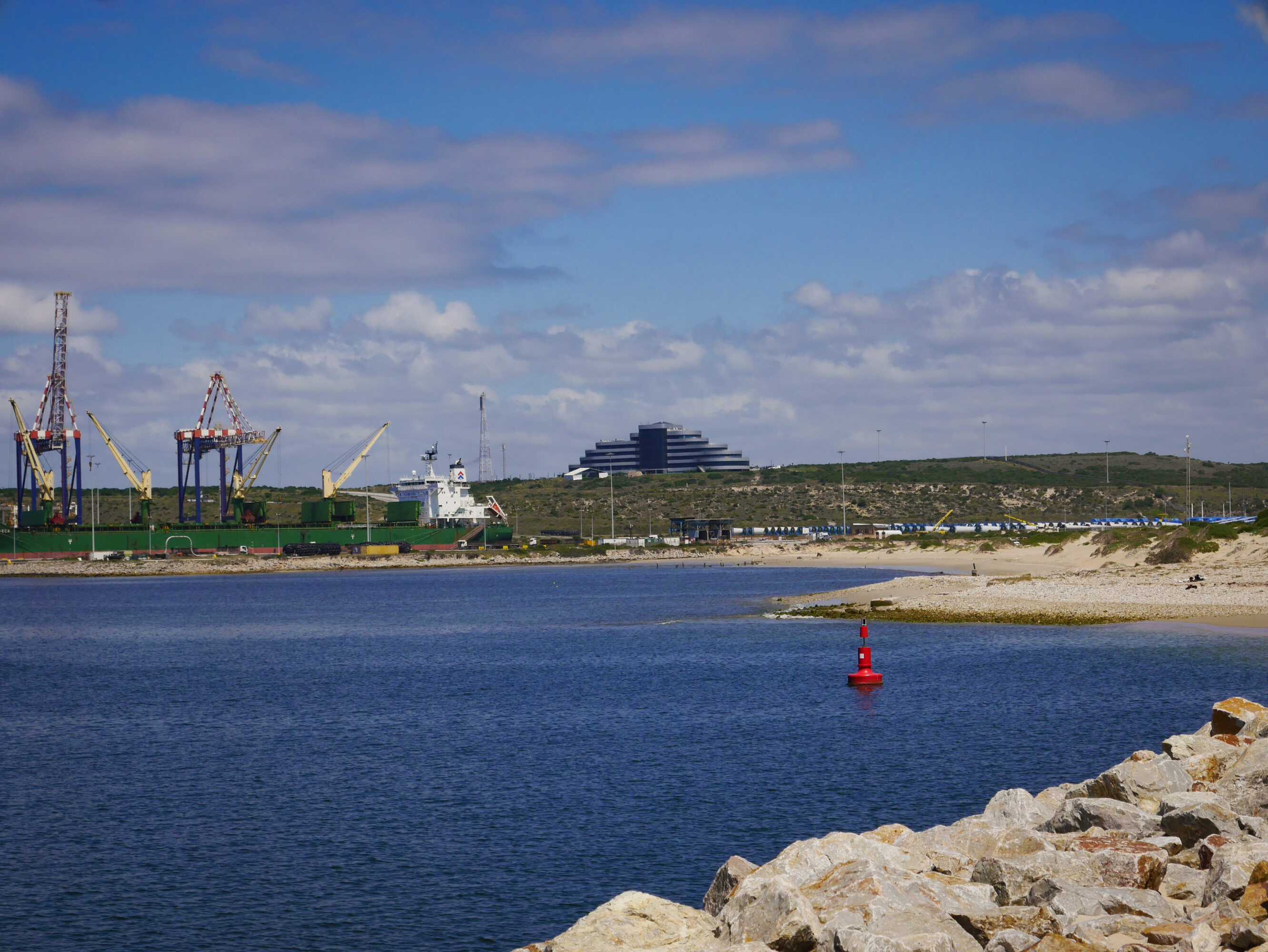
The still waters of Port Ngqura on a windy day and rough seas in Algoa Bay. Photo © Fanni Szakal
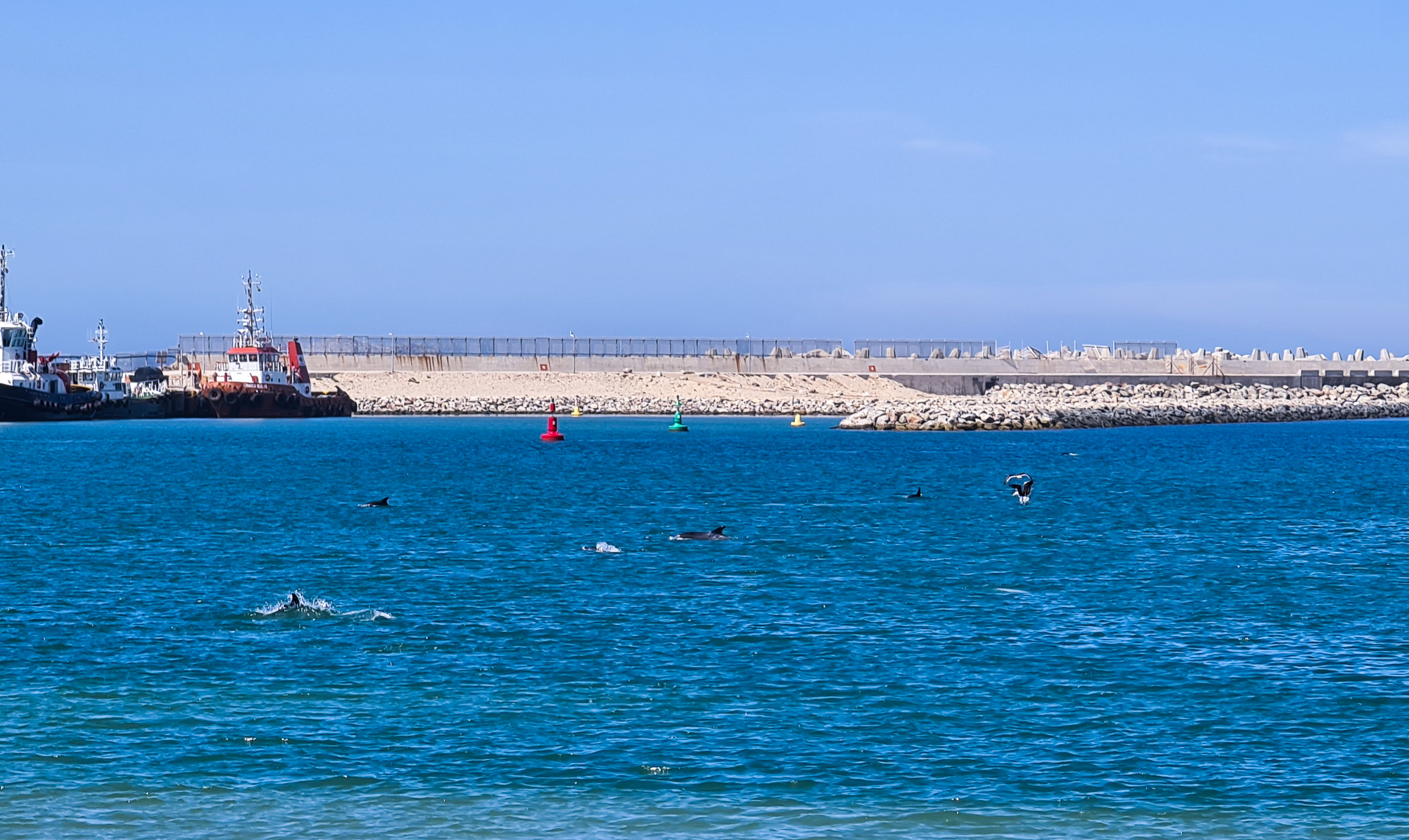
Pods of dolphins frequent Port Ngqura, making the most of abundant baitfish. Photo © Vivienne Dames
